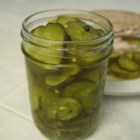In one experiment, Mendel cross-pollinated smooth yellow pea plants with wrinkly green peas. (The organisms that are used as the original mating in an experiment are called the parental generation and are marked by P in science textbooks). Every single pea in the first generation crop (marked as f1) was as yellow and as round as was the yellow, round parent. Somehow, yellow completely dominated green and round dominated wrinkly.
Mendel learned from this that there are two kinds of traits - dominant and recessive. In this case, the dominant traits are the yellow color and the round shape since they show up at the expense of the green color and the wrinkly shape. He also learned that the inheritance of each trait is determined by "units" or "factors" - now called genes.
Now he went on with his experiment and planted seeds from the all-yellow, all-round crop, achieved from the parent generation, and self-pollinated the grown up plants. The results led to some surprises. Most of the second generation (marked as f2) of peas were yellow and smooth, but some were green or wrinkly. Mendel repeated his experiment many times and the f2 generation consistently had a 3:1 ratio of yellow to green and round to wrinkly. How did Mendel explain his results?
As mentioned above, Mendel postulated that there are dominant and recessive traits in heredity.
In his experiment Mendel marked with capital letters dominant traits and with small letters recessive traits.
- Y = dominant yellow color g = recessive green color R = dominant round shape w = recessive wrinkly shape
In the pollination process the offsprings get one trait unit (gene) from every parent; in the case of color the possible combinations are gY Yg YY gg. Three combinations from the four - gY Yg YY - will give yellow offsprings since all of them possess at least one Y dominant unit. Only one combination from the four - gg - will give green offsprings since it has two recessive units.
Because, in order to show-up, a dominant trait needs only one trait unit from one of the parents, and the recessive one needs two, from both parents, in order to prevail, that is the reason why the ratio between occurrences of dominant traits and recessive traits is 3:1. The same explanation applies to the shape traits.
Mendel came to three important conclusions from these experimental results:
- That the inheritance of each trait is determined by "units" or "factors" (now called genes) that are passed on to descendents unchanged
- That an individual inherits one such unit from each parent for each trait
- That a trait may not show up in an individual but can still be passed on to the next generation.



